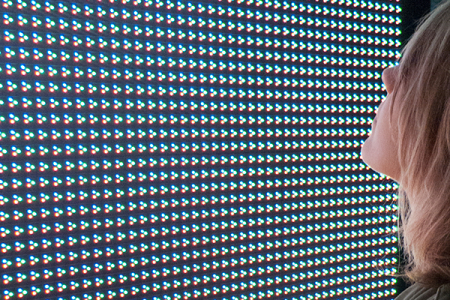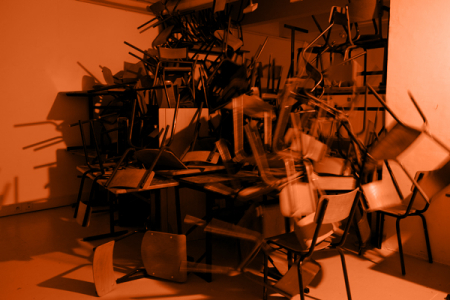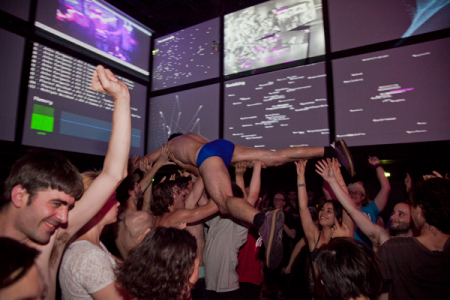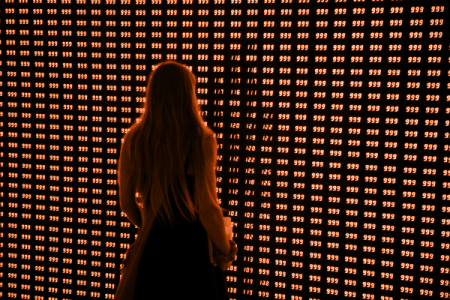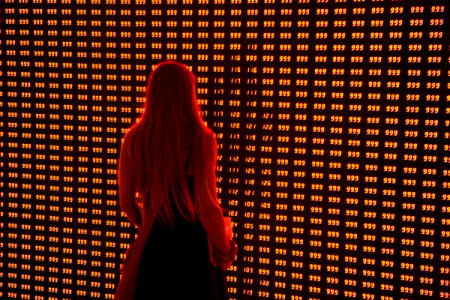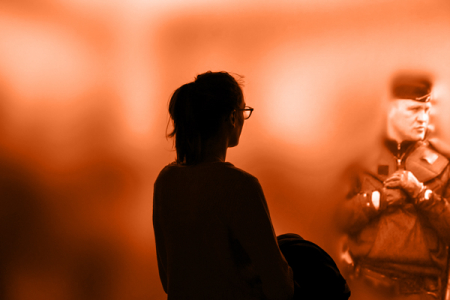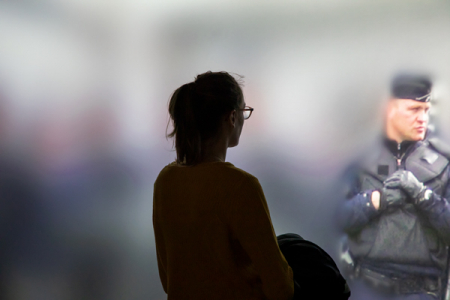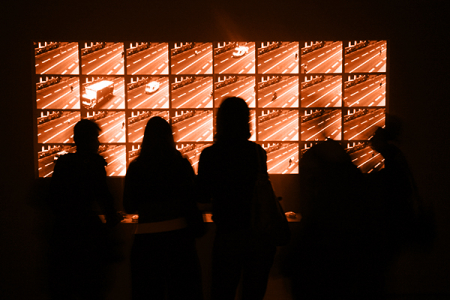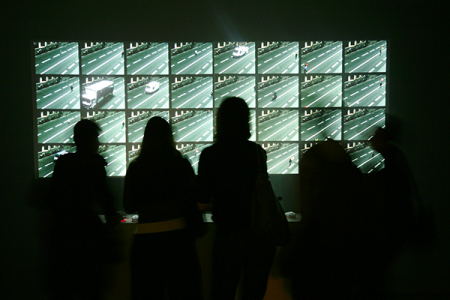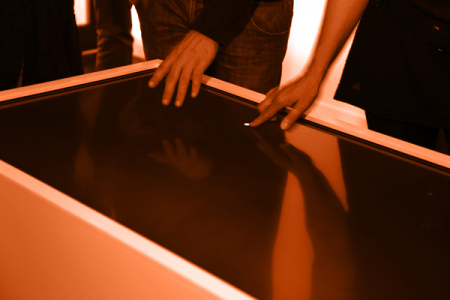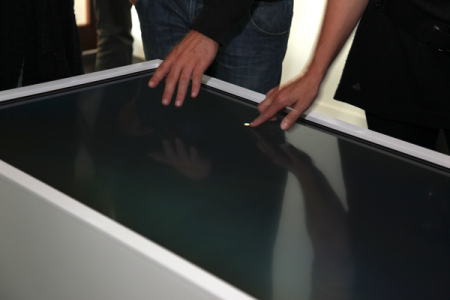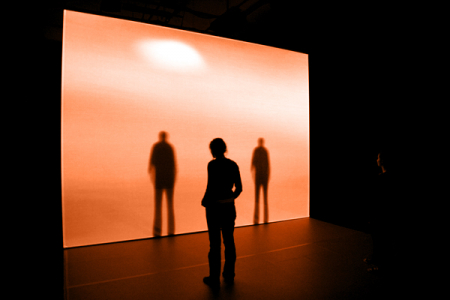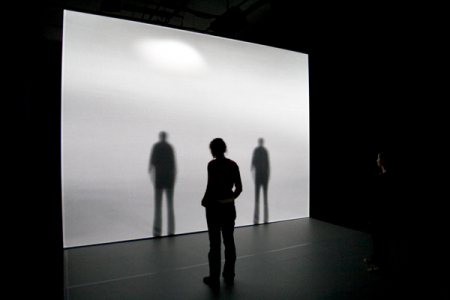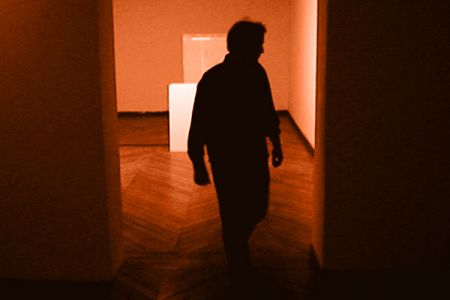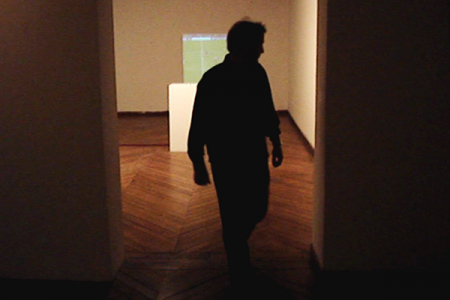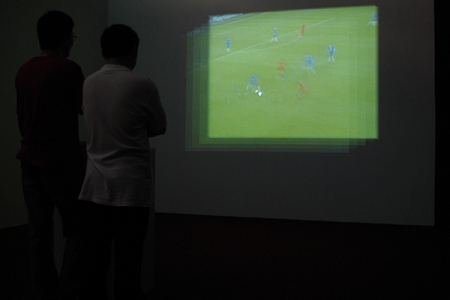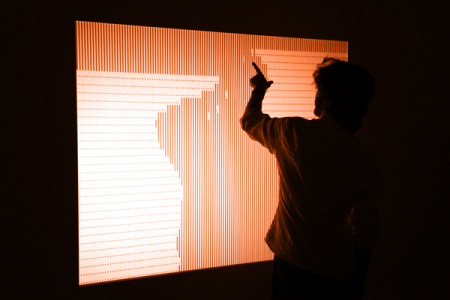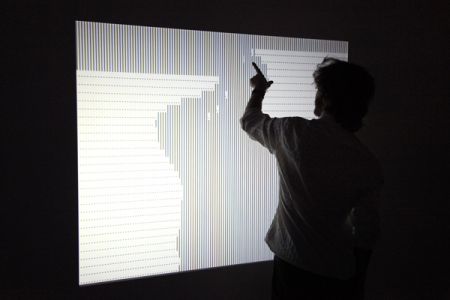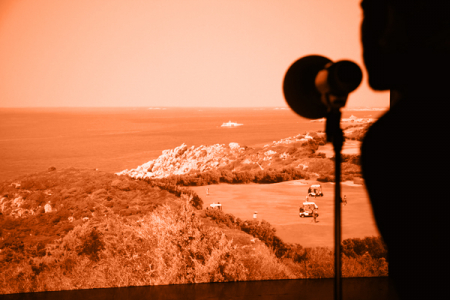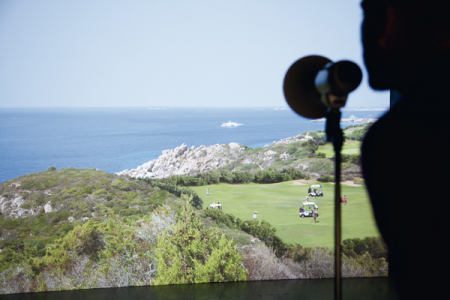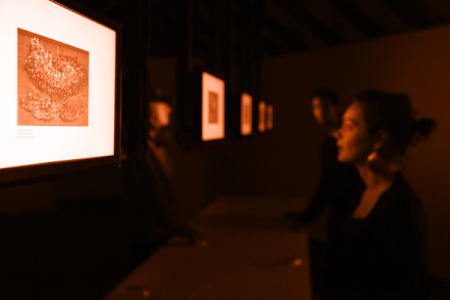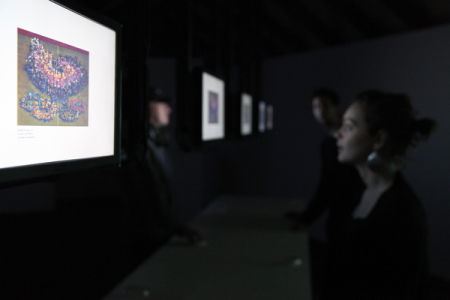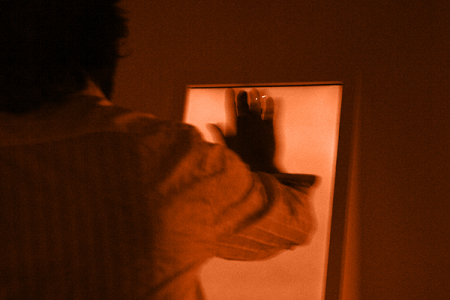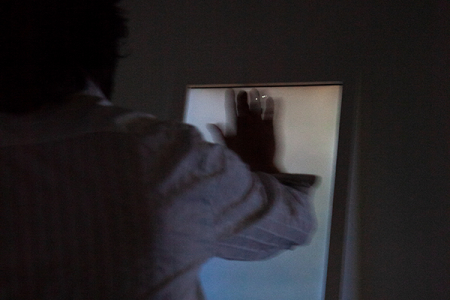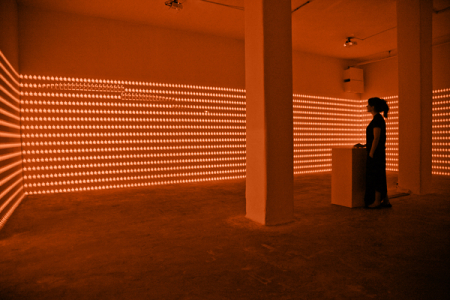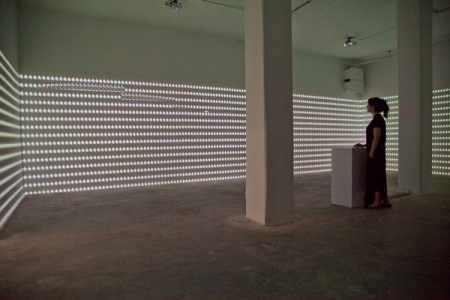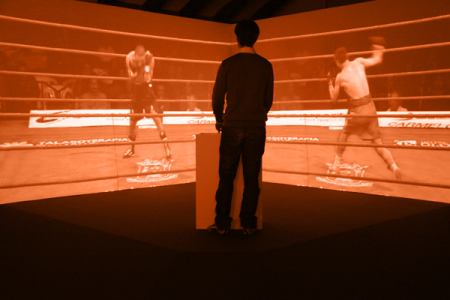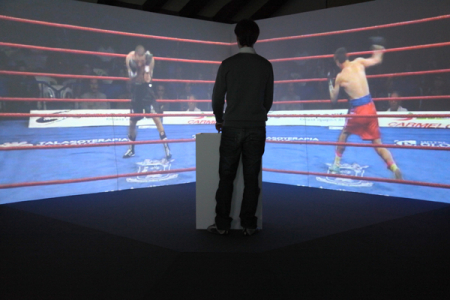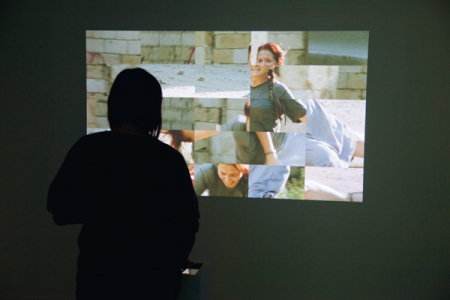
Pas de deux pas de | Samuel Bianchini
Oct 1 to Oct 2, 6:53 pm to 7:00 am
Harbourfront Centre, Ann Tindal Park, Toronto, Canada
Choreographic duet for spotlights / Duo chorégraphique pour projecteurs de lumière informatisés, 2016
A project created for / Un projet réalisé pour Nuit Blanche Toronto 2016
Production: City of Toronto
Curator / Commissaire: Louise Déry
Based on a free interpretation of a choreographic score of Act III of Swan Lake by Ivanov, Petipa and Sergeyev / À partir d'une interprétation libre d'une partition de l'acte III du Lac des cygnes par Ivanov, Petipa et Sergeyev.
Research and programming for light interpretation / Recherche et programmation pour l'interprétation de la lumière: Alexandre Saunier
Choreographic notation (original Laban score analysis and adaptation) / Notation chorégraphique: Amandine Bajou
Acknowledgments / Remerciements: Jonathan Tanant
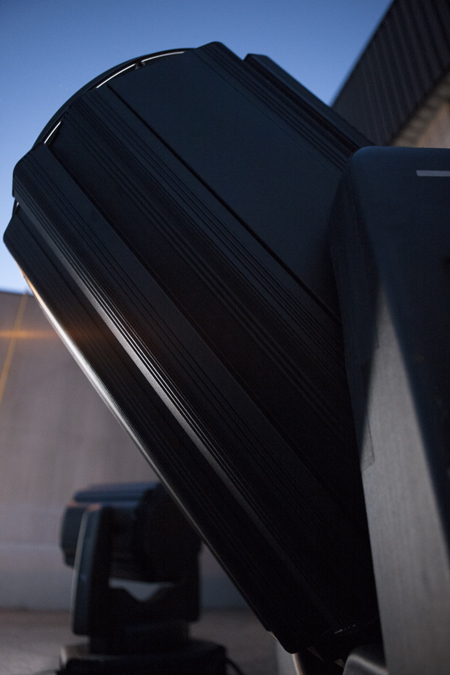
Test for Pas de deux pas de, 2016. Photo: Samuel Bianchini
Pas de deux pas de is a choreographic duet for two spotlights, which, like those used in live performance, project beams of white light. On a stage, in the middle of the city, these human-size spotlights have taken the place of the performers they are intended to highlight. Their beams are visible on an urban scale, in the sky and the surrounding areas, and above all, they light each other. The machines show themselves, avoid each other, seek each other out, synchronize with each other or not, attempting to perform, under the stars, an endless love duet and pas de deux, all through the night, on the banks on Lake Ontario.
How can such machines embody human movements and even feelings, moving together as a couple? How can one of the first and most famous "pas de deux", from Swan Lake, be interpreted from a choreographic score translated for their bodies and their mechanics? How can they take into account an environment that can disturb, intimidate, or even divert their attention – like the very real human dancers nearby, performing a choreographic work by Paul-André Fortier?
Pas de deux pas de est un duo chorégraphique pour deux projecteurs de lumière. Telles des poursuites utilisées dans le spectacle vivant pour suivre et souligner l'accomplissement d'un performeur sur scène, ces deux mêmes appareils projettent un faisceau de lumière blanche. Leurs faisceaux se donnent ainsi à voir à l'échelle de la ville, dans le ciel, aux alentours et, surtout, s'éclairent l'un l'autre. Les machines se montrent, s'évitent, se cherchent mutuellement, se synchronisent, ou pas. Cette fois, ce sont elles qui sont sur scène. Les poursuites censées mettre en lumière des performeurs ont pris la place de ces derniers. Ces projecteurs à taille humaine tentent d'interpréter, sous les étoiles, un duo amoureux sans conclusion, un pas de deux sans fin, jusqu'au bout de la nuit, en bordure du Lac Ontario.
“Adage”, “variations”, “coda”, comment faire accomplir à ces machines des figures de danse ? Comment pourraient-elles incarner des mouvements et même des sentiments humains ? Si elle ne sont plus célibataires, peuvent-elles évoluer en couple ? Comment interpréter l'un des premiers et plus célèbres “pas de deux”, celui du Lac des Cygnes, à partir d'une partition chorégraphique traduite pour ces machines ? Et comment ces dernières, s'exécutant dans l'espace public, peuvent-elle prendre en compte leur environnement qui pourrait les contrarier, les intimider ou, au contraire, détourner leur attention, à la manière de ces danseurs, bien humains, qui interprètent en proximité une pièce chorégraphique de Paul-André Fortier.
More informations about Nuit Blanche Toronto: here
More informations on the work : here


Visible Hand | Samuel Bianchini
Oct. 7-9, Front of the Medialab-Prado, Madrid, Spain
Online artwork / œuvre en ligne, 2016, after / après All Over (2009)
Software Engineering / Programmation informatique: Oussama Mubarak
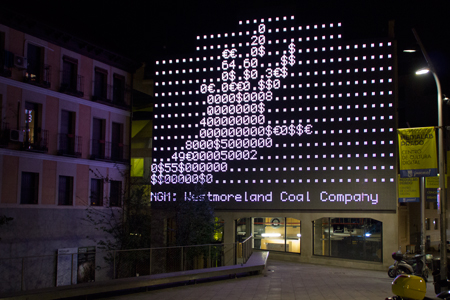
Test for Visible Hand, Samuel Bianchini, 2016, Medialab-Prado, Madrid, Sept. 2016. Photo: Carles Gutierrez
Visible Hand is an online artwork based on the simple image of a hand, a sort of hand icon, composed of typographic characters in the manner of ASCII art, using the display techniques of the first computers. In this case, however, the figures and letters composing the images are dynamic and keep changing: they are generated in real-time following the rise and fall of stock market indexes around the world. The originally still image changes according to the volume of financial transactions, which simultaneously feed and disrupt this image. Caught between the digital and the financial, and between two forms of representation, the picture of the hand seems to be constantly struggling for its visibility and its uncertain reality. Whose hand is this? Does that hand mean something? Does it call for help? Is it the hand of a protester? Or of a trader? Just calling or showing the number 5 on his fingers, reminding us that counting on our fingers (“digits”) is the base of the “digital”. In any case, this hand is not that of Adam Smith, the “Invisible Hand” supposed to regulate the global markets.
Others activities during Proyector Videoart Festival
Professional meeting
Oct. 8, 5:30 to 6:45 pm, El Águila
"A place for study and reflection on artistic training for professionals and laymen"
with Samuel Bianchini, Federico Daza, Daniel Lupión, Josu Rekalde. Moderation Alberto Chinchón.
Artists meet-up
Oct. 9, 11 am to 2 pm, Intermediæ
with Samuel Bianchini, Gabriel Castaño, Paco Chanivet, Rodrigo Faustini, Francesca Fini, Simon Guiochet, David Ortiz Juan, Víctor Ripoll and Isidoro Valcárcel Medina.
More informations about Proyector Videoart Festival: here
3 Prix AICA France de la critique d’art /
The AICA France Art Criticism Prize: a retrospective catalogue (2013-2015)
Raphaël Cuir (ed / dir.), Dijon, Éd. Les Presses du réel, 2016.
Catalogue rétrospectif des trois premières éditions (2013-2015) du prix AICA récompensant la critique d'art : organisé sur le principe du Pecha Kucha, un format de présentation court et interactif venu du Japon, un panel de critiques vient défendre le travail d'un artiste souvent méconnu du public. La présente publication retranscrit l'ensemble des 28 interventions, illustrations à l'appui, dont celle de Dominique Moulon sur Samuel Bianchini pages 150 à 153.
Plus d'informations : ici
More informations: here
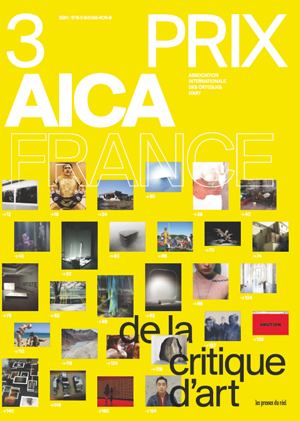
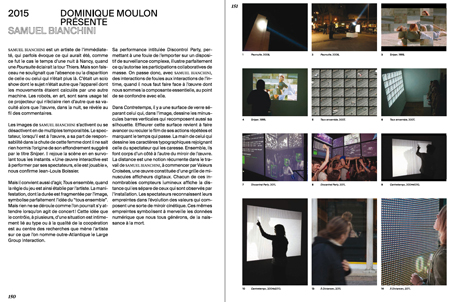

Disposer de contre-rôles
Un entretien de Samuel Bianchini par Igor Galligo
in Dispositifs artistiques et interactions situées, Bernard Guelton (ed / dir.), Rennes,
Éd. Presses Universitaires de Rennes, 2016.
Plus d'informations : ici (only in french)
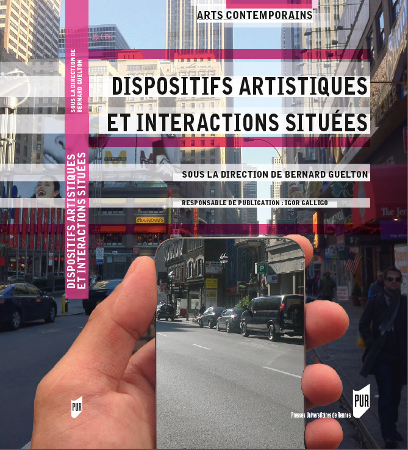
Recherche en arts : valeur pratique, valeur économique
Samuel Bianchini
in Artistes au travail. On bouscule les idées reçues, actes du colloque organisé le 24 avril 2015, Bruxelles, Éd. Les Cahiers de Culture & Démocratie, n°6, 2016.
To download / À télécharger ici (only in french)
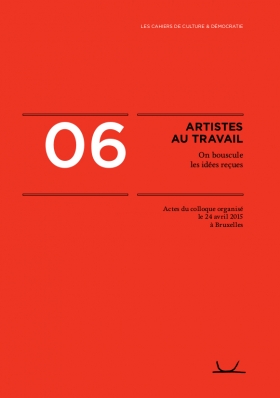
Dispositifs & installations artistiques : étude de la topologie des interactions collectives co-localisées
Art installations: a study of the topology of collective co-located interactions
Oussama Mubarak, David Bihanic, Samuel Bianchini
IHM’16, 28ème Conférence Francophone sur l’Interaction Homme-Machine
du 25 au 28 octobre, Fribourg, Suisse
Plus d'informations : ici (only in french)
Résumé
Les dispositifs artistiques mettant en œuvre des interactions collectives co-localisées n’appellent que rarement l’exécution d’une tâche ou d’un objectif énoncé au préalable servant de conducteur à l’activité. Si cette nouvelle configuration, qui se différencie de celles de l’IHM traditionnelle, se révèle, du point de vue de l’expérience esthétique, l’une des plus riches et 'engageantes’, elle n’en demeure pas moins complexe à appréhender (sur le plan perceptivocognitif) tant pour l’artiste que pour l’utilisateur final. Fort d’une étude de cas (exemples concrets d’installations artistiques), nous nous proposons au sein de ce présent article d’examiner quelques unes des configurations topologiques d’interaction collective co-localisée aujourd’hui à l’œuvre en partant d’une analyse du champ d’action des agents du système et de leurs interactions. Pour ce faire, nous y jetons les bases d’un nouveau langage graphique (ici utilisé pour décrire les relations d’interfaçage) que nous envisageons
ultérieurement dédier à la modélisation, représentation et analyse taxonomique visuelle des topologies de l’interaction.
Abstract
Art installations that enable co-located collective interactions rarely call the execution of a task or a preannounced goal as a guideline for the activity. If this new configuration, which differs from those of traditional HCI, is revealed, from the perspective of aesthetic experience, to be one of the richest and most ’engaging’ ones, it is by no means less
complex to apprehend for both the artist and the end-user. Through a case study (with concrete examples of artistic installations), we propose in this present article to examine
the topological configurations of existing co-localized collective interaction by analyzing the scope of actions of the systems’ agents and the relations between them. To achieve this, we lay the foundations of a new graphical language (used here to describe the relations between interfaces), which we foresee to dedicate, in the near future, to the modeling, visual representation and taxonomic analysis of topologies of interaction.

